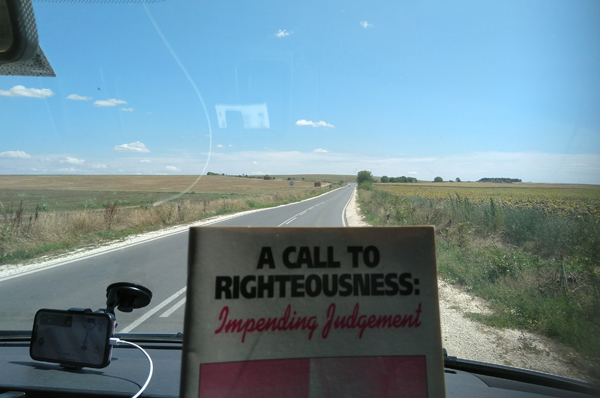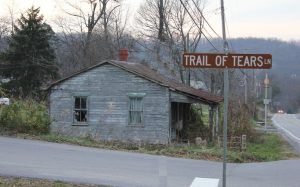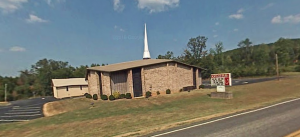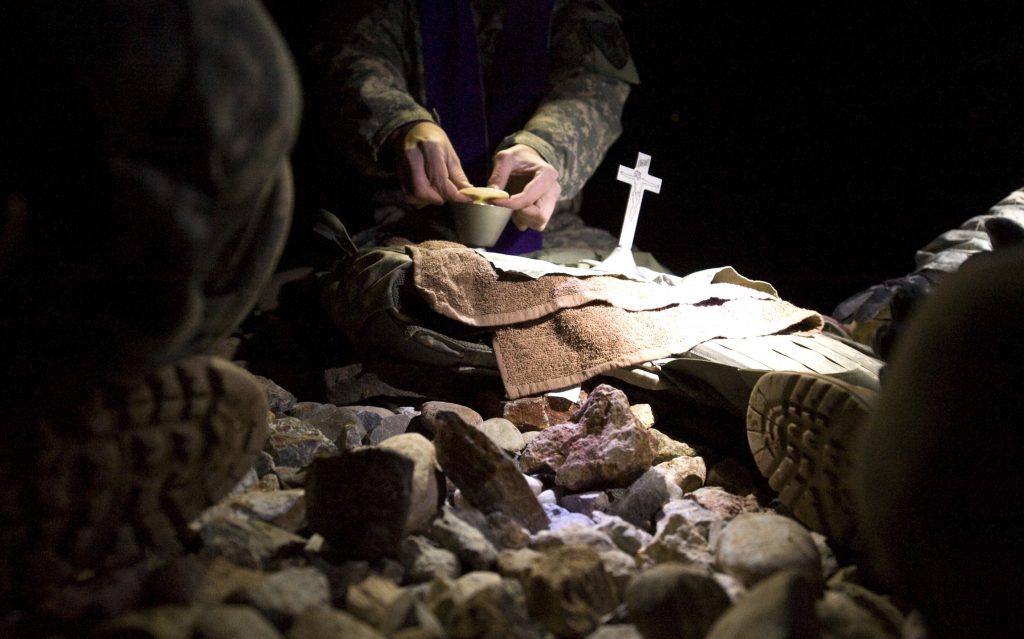Russia’s Prophetic Imperial Road to Israel
August 30, 2025 by Cup&Cross
Filed under Featured, Missions, News, Publication

Ukraine is the hinge between Russia’s Eurasian interior and its southern theaters— the Black Sea, the Turkish Straits, the Eastern Mediterranean, and the Levant/Israel. Since 2022, battlefield developments in the Black Sea (attrition of the Black Sea Fleet, restrictions under the Montreux regime, and the end of the grain initiative) have reshaped Russia’s access and force projection toward the Middle East, where Moscow relies on long-term basing in Syria (Tartus/Khmeimim). In eschatological discourse, readings of Ezekiel 38–39, Daniel 11, and Revelation 20 often envision a “northern” vector toward Israel; while controlling Ukraine facilitates the logistical corridors by which a northern power could move toward the Levant.
1) Historical Perspective: the “imperial corridor” to the south
From Tsarist times through the USSR to the present, the drive to “warm waters” has been durable. Black Sea access and the Bosporus/Dardanelles are prerequisites for reaching the Mediterranean and, ultimately, the Levant/Israel. Ukraine, as a Black Sea state, constitutes the intermediate step between Russian continental depth and southern power projection. Biblical refs: Ezek 38:6, 15; Dan 11:40–45; Isa 41:2.
2) Geopolitics: the Black Sea and the Straits
In February 2022, Turkey invoked the Montreux Convention and closed the Straits to belligerents’ warships, constraining Russian naval rotations between the Med and the Black Sea and hampering amphibious options. Concurrently, Ukraine’s strikes—the sinking of the flagship Moskva (Apr 14, 2022), the Sevastopol dry-dock strike (Sept 2023), and repeated attacks on the Kerch Bridge (2022; 2023)—forced Russia to redistribute vessels away from Sevastopol and operate farther east/under greater risk, reducing freedom of action in the western Black Sea and approaches to the Mediterranean. The termination of the Black Sea grain deal (July 2023) further altered maritime risk and logistics.
3) Military-Strategic Logic: from the Ukrainian front to the Levant
Despite constraints at sea, Russia retains a strategic foothold in Syria through a 49-year lease at Tartus and a standing agreement for the Khmeimim air group—legal architecture for long-term Eastern Mediterranean presence and potential leverage vis-à-vis Israel. The Ukrainian theater is linked to this southern theater via maritime access (Black Sea/Straits) and via technology transfer (UAVs, air defense, long-range strike). Since 2022, Russia has localized production of Iranian-designed Shahed/Geran UAVs (Alabuga, Tatarstan), supporting a protracted war effort and shaping capabilities that could be repurposed across theaters, including the Levant. Whatever frictions may exist, the drone co-production pattern—financing, localization, scale—is well documented.
4) Biblical Perspective: Ezekiel, Daniel, Revelation
- Ezek 38–39 (Gog of Magog): a coalition “from the far north” advancing against Israel “in peace.” Contemporary application is not a one-to-one mapping to Ukraine; rather, it highlights northern approach vectors whose geography aligns with Black Sea–Anatolian–Levantine corridors.
- Dan 11:40–45: movements of a “king of the North” toward the “Beautiful Land” are often read typologically, consistent with north-to-south operational axes.
- Rev 20:7–9 (Gog and Magog): eschatological gathering of nations; not an identification of specific modern states, but a framework for northern-southern mobilizations.
5) Prophetic Scenarios and the “Last Days”
In prophetic discourse, “wars and rumors of wars” (Matt 24) function as general markers, not as a GPS of events. Ukraine is not named in Scripture, yet control over Ukraine affects Russia’s capacity to mass naval/air/cyber power toward Israel via the Black Sea and the Straits—especially if shore-based leverage persists at Tartus/Khmeimim. NATO’s enlargement with Finland (2023) and Sweden (2024) reshapes the northern balance, indirectly constraining Russian bandwidth for southern adventures.
Conclusion
Ukraine is a geostrategic key to Russia’s southern theaters. Post-2022 constraints in the Black Sea/Straits and attrition of the Black Sea Fleet have complicated Moscow’s ability to project power toward the Levant—unless offset by Syrian basing and asymmetric systems (UAVs, missiles). Eschatologically, this does not “prove” a direct fulfillment of Ezekiel 38–39; it delineates plausible corridors by which a northern power might act against Israel.
A Call to Righteousness over the Road Ahead

The Road Ahead
Historical Significance of the Tennessee/Georgia Old Federal Road in the Trail of Tears and its Connection to the Church of God
 Historical Significance of the Tennessee/Georgia Old Federal Road in the Trail of Tears and its Connection to the Church of God
Historical Significance of the Tennessee/Georgia Old Federal Road in the Trail of Tears and its Connection to the Church of God
New Echota, Georgia was the capital of the Cherokee Nation from 1825 to 1838. This is the location where the Treaty of New Echota or the Treaty of 1835 was signed on December 29, 1835 by U.S. government officials and representatives of a minority Cherokee political faction called “The Treaty Party” or “Ridge Party”. This treaty was not approved by the Cherokee National Council nor signed by Principal Chief John Ross. Regardless, it established terms under which the Cherokee Nation were to receive a sum not exceeding five millions dollars for surrendering their lands and possessions east of the Mississippi river to the U.S. Government and agreeing to move to the Indian Territory west of the Mississippi River, which later became part of Oklahoma.
The Red Clay State Historic Park, located 17 miles southwest of the Church of God Headquarter in Cleveland, Tennessee, marks the last location of the Cherokee councils where Chief John Ross and nearly 15,000 Cherokees rejected the proposed Treaty of 1835. Despite the questionable legitimacy of this Treaty, in March 1838, it was amended and ratified by the U.S. Senate and became the legal basis for the forcible removal of the Cherokee Nation known as the Trail of Tears. The name came from the Cherokees who called the removal “Nunna-da-ul-tsun-yi,” which means “the place where they cried.” The last pieces of land controlled by the Cherokee Nation at that time were North Georgia, Northern Alabama and parts of Tennessee and North Carolina. The forced journey was through three major land routes. Each route could have taken some 1,000 miles and over four months to walk. The removal of the Cherokees and other tribes from their homelands in the Southeast began May 16, 1838.
The Georgia Road or present day Federal Road was a route of the Trail of Tears that the Cherokee people walked during their forced removal from their homelands. The route was built from 1803 to 1805 through the newly formed Cherokee Nation on a land concession secured with the 1805 Treaty of Tellico with the agreement that the U.S. Government would pay the Cherokee Nation $1,600.00. The Treaty was signed on October 25, 1805 at The Tellico Blockhouse (1794 – 1807) – an early American outpost located along the Little Tennessee River in Vonore, Monroe County, Tennessee that functioned as the location of official liaisons between the United States government and the Cherokee. The route was originally purposed to be a mail route because of the great need to link the expanding settlements during the westward expansion of the U.S. colonies. It was in 1819 after improvements to the road that it was called “the Federal Road”.
The Tellico Blockhouse was the starting point for the Old Federal Road, which connected Knoxville to Cherokee settlements in Georgia. The route ran from Niles Ferry on the Little Tennessee River near the present day U.S. Highway 411 Bridge, southward into Georgia. Starting from the Niles Ferry Crossing of the Little Tennessee River, near the U.S. Highway 411 bridge, the road went straight to a point about two miles east of the present town of Madisonville, Tennessee. This location is 20 some miles north of the Tellico Plains area that marks the site of the beginning of the Church Cleveland, Tennessee. The road continued southward via the Federal Trail connecting to the North Old Tellico Highway past the present site of Coltharp School, intersected Tennessee Highway 68 for a short distance and passed the site of the Nonaberg Church. East of Englewood, Tennessee it continued on the east side of McMinn Central High School and crossed Highway 411 near the railroad overpass. Along the west side of Etowah, the road continued near Cog Hill and the Hiwassee River near the mouth of Conasauga Creek where there was a ferry near the site of the John Hildebrand Mill. From the ferry on the Hiwassee River the road ran through the site of the present Benton, Tennessee courthouse.  It continued on Welcome Valley Road and then crossed the Ocoee River at the Hildebrand Landing. From this point the road ran south and crossed U.S. Highway 64 where there is now the River Hills Church of God formerly the Ocoee Church of God. Continuing south near Old Fort, the route crossed U.S. Highway 411 and came to the Conasauga River at McNair Landing. Near the south end of the village of Tennga, Georgia is an historic marker alongside of Highway 411m which states the Old Federal Road was close to its path for the next twenty-five miles southward. It would have been at this point in Tennga that the Trail of Tears would have taken a turn onto GA-2 passing the Praters Mill near Dalton Georgia to connect in Chattanooga, Tennessee.
It continued on Welcome Valley Road and then crossed the Ocoee River at the Hildebrand Landing. From this point the road ran south and crossed U.S. Highway 64 where there is now the River Hills Church of God formerly the Ocoee Church of God. Continuing south near Old Fort, the route crossed U.S. Highway 411 and came to the Conasauga River at McNair Landing. Near the south end of the village of Tennga, Georgia is an historic marker alongside of Highway 411m which states the Old Federal Road was close to its path for the next twenty-five miles southward. It would have been at this point in Tennga that the Trail of Tears would have taken a turn onto GA-2 passing the Praters Mill near Dalton Georgia to connect in Chattanooga, Tennessee.
Out of the 15,000 Cherokee who endured the forced migration west after the Treaty of 1835, it is estimated that several thousand died along the way or in internment holding camps. This Old Federal route is where some of Cherokee holding camps would have been located. The Fort Marr or Fort Marrow military post constructed around 1814 under the 1803 Treaty, is the last visible remains of these camps. The original fort was built on the Old Federal Road near the Tennessee/Georgia state line near the Conasauga River. It was relocated in 1965 beside U.S. Hwy. 411 in Benton and then to it’s current location in the Cherokee National Forest on the grounds of the Hiwassee/Ocoee State Park Ranger Station at Gee Creek Campground in Delano, Tennessee. This location provides access to popular Church of God water baptismal sites. In June 4, 1838 Captain Marrow reported having 256 Cherokees at his fort ready for emigration.
The Native Americans were forcefully removed from their homes, plantations and farms all because of greed. Thousands of people lost their lives including the wife of Chief John Ross. Parts of the Old Federal Road have been washed away with floods of tears, but there are parts that still remain. The Church of God, having its roots in the same territory of the Cherokee, Chickamauga, Muskogee Creek, Choctaw and Chickasaw people, plays a vital role in the process of reconciliation among the descendants of the Trail of Tears. And the historical buildings and markers along the Trail or Tears must be preserved. The churches along the route even though they were not actual structures during the time period are a historical beacon of hope which still crying out for those lost on this tragic journey.
The Old Federal Road and the Cherokee Trail of Tears
 The Old Federal Road: Researched & composed by Allen Parke Swayne & James Parke Swayne
The Old Federal Road: Researched & composed by Allen Parke Swayne & James Parke Swayne
During the westward expansion of the original colonies, both north and south of the Cherokee Nation, there was great need for a mail route to link the expanding settlements. Since the Cherokee Nation occupied the area from the mountains of North Carolina westward to Red Boiling Springs in middle Tennessee, the United States settlements in Georgia could not communicate with anyone living in Virginia. The idea of negotiating with the Cherokee for a mail route from Knoxville to Augusta, Georgia may have started as early as 1792 when George Washington began his second term as president.
The route was obtained in 1806 with the agreement that the U.S. Government would pay the Cherokee $1,600.00 and was known by The Tellico Treaty. The route was laid out by a party of Indians and whites and it ran from Niles Ferry on the Little Tennessee River, southward into Georgia. The area went through the land occupied by the Cherokee Nation and the route took advantage of favorable terrain for travelers.
The actual construction of the Old Federal Road was apparently done by the Indians who also ran the ferries crossing the Hiwassee and Ocoee Rivers. The excellent choice of right-of-way is impressive from an engineering standpoint. From Niles Ferry to Conasauga it does not deviate as much as one-half mile from a straight line. It follows low-shale ridges in most places and it following creeks and swampy areas.
Starting from the very old Niles Ferry Crossing of the Little Tennessee River, near the present U.S. Highway 411 bridge, the road went in an almost straight line to a point about two miles east of the present town of Madisonville. Here in 1828, the newly created Monroe County erected its first courthouse on what is now the Ross Jewell farm. It was a two-story log building with the jail on the top floor.
The road continued southward past the present site of Coltharp School, intersected Tennessee Highway #68 for a short distance and passed the site of Nonaberg Church. East of Englewood, it continued on the east side of McMinn Central High School and crossed Highway #411 near the railroad overpass. Apparently, when the railroad was built, a road just on the east side of the tracks leading into Etowah was called the Old Federal Road. This has caused some confusion as to location but it is well established that the original road came near Old Williamsburg and ran through the Doug Tullock property. By keeping on this route, it missed the low ground and swampy conditions that were typical of the Etowah area and its vicinity.
Keeping on the higher ground along the west side of Etowah, the road continued near Cog Hill and the Hiwassee Riber, near the mouth of Conasauga Creek. It may have passed through the town of Columbus, but it is more likely that the ferry was farther downstream. Columbus was the first county seat of Polk County and at one time it had a hotel, two stores and two churches. The little town faded out of existence after the Ocoee Purchase of 1835, when Benton was chosen for the county seat. The last empty building was used in 1860 by the U.S. Army to build a pontoon bridge across the Hiwassee River so that troops could be moved toward Chattanooga.
Three grave sites remain on the hill overlooking the old town site of Columbus. They are of Col. Henry Bradford, 1776/1871 and his wife Rachel Farland Bradford and Stanwix Hord, son of Col. Hord. These graves sites are easily found in this area, although they were untended for years and were in a deplorable condition until restored and fenced in 1995.
About a mile up Conasauga Creek from its mouth is the site of the Hildebrand Mill. It was built about 1807 by the U.S. Government for the Cherokee Indians. John Hildebrand was of German descent and was manager of the first hotel in Knoxville when he was hired to build a grist mill for the Indians at a mutually satisfactory site. The site on Conasauga Creek was selected and the mill was constructed. Hildebrand married a Cherokee woman and raised his family in Polk County.
From the ferry on the Hiwassee River the road ran through the site of the present Benton courthouse. It followed the site of the Welcome Valley Road for some distance and then crossed the Ocoee River at the Hildebrand Landing. One of the Hildebrands built a fine house on the south side of the Ocoee River. This dwelling still exists although it has been moved a short distance. It was owned by Mr. & Mrs. Willis Trew but has been deeded to the Polk County Historical Society upon the death of the present occupant.
From Hildebrand Landing the road ran south and crossed U.S. Highway #64 at a point where there is now a Church of God. Continuing south near Old Fort, it crossed U.S. Highway #411 and came to the Conasauga River at McNair Landing. The McNairs were part Cherokee and were moved out on the Trail of Tears in 1838. The McNair gravesite was still in existence in 1950.
Since the Hildebrand Landing on the Tennessee-Mississippi Rivers system the Old Federal Road was used as a portage route to cut off over a thousand miles of travel from the water route to Mobile Bay. Heavy carts pulled by oxen moved boats from Hildebrand to McNair. One cargo boat was reported to carry one hundred barrels of flour and whiskey, but the proportion of each was not given. A proposal to build a canal to replace the portage was found to be not feasible.
Near the south end of the village of Tennga, Georgia is an historic marker alongside of Highway #411 which states the Old Federal Road was close to its path for the next twenty-five miles southward.
Besides the developments already mentioned, there were several other historic sites that were built near the Old Federal Road. A few of these are as follows:
- Vastine Stickley House in Madisonville
- Cantrell Grave near Etowah
- Nonaburg Church near Englewood
- Etowah Depot
- Cog Hill Seminary near Etowah
- Trew’ Store near Etowah
- Old Fort blockhouse in Benton
- Carlock Academy near Etowah
- Methodist Campground near Etowah
- Williamsburg near Etowah
- Half Moon Sotre in Monroe County
- Ho Store in Monroe County
- Sequoyah Birthplace museum near Vonore
- Hildebrand landing to McNair Landing, portage route in Polk County
As we have traced the history and route of the Old Federal Road, it has been found to be one of the most important sites which aided in the historical development of the States of Georgia and Eastern Tennessee. Please make some allowances for the hand-drawn path on the map above. It does deviate a small amount from the actual path.
- Coltharp School and Coltharp Community so called after the Coltharp family…many of which still reside in the area.
- Nonaberg Church still active.
- The Hildabrand lineage is well documented by several people…all of altering heritages, African-American, White & Cherokee. For more information please email [email protected] This family had marriages within the Mayfield, Starr & several other families in the area.
- The Church of God spoken of is “Ocoee Church of God”.
- The Old Fort Blockhouse spoken of originally stood approximately 1 mile north of McNairs Ferry. In the mid 1950’s the building was moved from its original location to its current location near the Polk County Jail in Benton, TN.
PneumaReview.com: The Road Ahead
In the past three years since we released PneumaReview.com, we’ve received so many questions on how was it built and constructed to reach such a large audience with its intentionally broad spectrum of research in Pentecostal theology. While some of the technological expertise used is protected as know-how and intellectual property, most of the web architecture and social media strategies are based on free open source technology, which could and should be used by ministries and ministry websites who are dedicated to spreading the Gospel of Jesus Christ…
This is an excerpt from the larger publication: PneumaReview.com: When, Why and How did we create it?
The road ahead…
As technology constantly progresses, there’s always so much to improve. From a purely technological standpoint, however, there are several immediately necessary measures, which Pneuma Review is due. The free registration via social login and auto translation of the article database were both envisioned in the platform from its genesis. Their immediate implementation will open this invaluable web resource to the global community of Pentecostal scholars worldwide. With this move, the SEO optimization not only of generated content, but also social media archives (by rule disregarded by most search engines as per their privacy regulations) will open a massive amount of organic back linking, which will reaffirm the importance of the website as a global community building tool.
Furthermore, the current web platform offers several valuable opportunities for marketing the product, which began as a printed publication. The way it was designed and structured, the whole database is completely printable both as a periodical and volume/series format. Using this current technology makes printing once again an inexpensive and invaluable option, as potential revenue is not only sufficient to cover the cost of printing, but also to invest in further development of the web platform itself.
Finally, the building of a Pentecostal community on the internet with the resources of higher academia is perhaps the single and most important attempt to merge Pentecostal theology and praxis within the last couple of decades. Thus, recovering not only the grass roots of Pentecostal scholarship, but remerging the purity of doctrine with the ministry of the church.
Yes, in few short years social media has provoked an unprecedented response from the Pentecostal community. But social media is not here to stay. As it changes and progresses, it will soon be obsolete as everything else in technology. For this reason, the present opportunity to engage the global Pentecostal community with theology proper via social media must not be taken lightly. And why not even a move from “dead old white guys” theology and organization to understanding God through color, ethnos and gender that truly represents the internationalization of Pentecostal faith and praxis and involves ethnicity, adversity and vanguard of the global Pentecostal academia today?
The Road Ahead for the Master’s of Chaplaincy Ministry Program (2016-2020)
 We are proud to announce that the Master’s of Chaplaincy Ministry Program, we designed and launched in Bulgaria in 2006, has been selected to be part of the Social Service Program of New Bulgarian University. After being for years a valuable part of the regular curriculum of the Bulgarian Evangelical Theological Institute and the St. Trivelius Institute in the capital Sofia, the chaplaincy program has received the highest level of recognition as successful graduates will be finally able to receive government recognized degrees and apply their knowledge and training in chaplaincy on a professional level. The chaplaincy program can also serve within the Integration Proposal of local NATO programs and be instrumental in dealing with the enormous wave of Middle East migrants crossing through Bulgaria today.
We are proud to announce that the Master’s of Chaplaincy Ministry Program, we designed and launched in Bulgaria in 2006, has been selected to be part of the Social Service Program of New Bulgarian University. After being for years a valuable part of the regular curriculum of the Bulgarian Evangelical Theological Institute and the St. Trivelius Institute in the capital Sofia, the chaplaincy program has received the highest level of recognition as successful graduates will be finally able to receive government recognized degrees and apply their knowledge and training in chaplaincy on a professional level. The chaplaincy program can also serve within the Integration Proposal of local NATO programs and be instrumental in dealing with the enormous wave of Middle East migrants crossing through Bulgaria today.
In the beginning of the 21st century in Bulgaria, law and chaplaincy meet on the road to democracy. But before chaplaincy could be legalized completely and endorsed by the state to its full functionality, several changes must be undergone. Some of them are:
- Legal provision allowing chaplains to work as staff in the army, which guarantees the equal presence of protestant chaplains as well.
- The approval, acceptance and implementation of a NATO based model for chaplaincy within the structures of the Bulgarian Army.
- Periodical and systematic educational strategy toward chaplaincy workers among Bulgarian evangelicals.
- A paradigm for cooperation of Bulgarian chaplains from various ethnic, religious and cultural backgrounds.
- Further research publications to enhance the efficiency of chaplaincy within the Bulgarian national context.
Also important [click to read]:
- U.S. Department of State recognizes our chaplaincy efforts in Bulgaria
- Bulgarian Chaplaincy Association: Integration Proposal with Local NATO Programs
- Bulgarian Chaplaincy Association: Vision and Resolution
- Chronology of our role and involvement in developing Church of God chaplaincy in Bulgaria since 2001
- Master’s of Chaplaincy Ministry Program in Bulgaria Reflections
- The Past Decade of Chaplaincy in Bulgaria (2006-2016)
- Related Publications and Presentations by Cup & Cross Ministries International
Preaching at Stewart Road Christian Ministries Center
Master’s Degree of Chaplaincy Ministry in Bulgaria: The Road Ahead
In the beginning of the 21st century in Bulgaria, law and chaplaincy meet on the road to democracy. But before chaplaincy could be legalized completely and endorsed by the state to its full functionality, several changes must be undergone. Some of them are:
1) Legal provision allowing chaplains to work as staff in the army, which guarantees the equal presence of protestant chaplains as well.
2) The approval, acceptance and implementation of a NATO based model for chaplaincy within the structures of the Bulgarian Army.
3) Periodical and systematic educational strategy toward chaplaincy workers among Bulgarian evangelicals.
4) A paradigm for cooperation of Bulgarian chaplains from various ethnic, religious and cultural backgrounds.
5) Further research publications to enhance the efficiency of chaplaincy within the Bulgarian national context.
- Chaplaincy Conference and Master’s of Chaplaincy
- Chaplaincy Course in Yambol, BULGARIA
- Bulgarian Chaplaincy Association Annual Meeting
- Family Seminar for Military Men and Women
- Cup & Cross Ministries in Church of God Publications
- The Case of a NATO Chaplaincy Model within the Bulgarian Army
- 10 Years of Military Ministry in Bulgaria
- Bulgarian Chaplaincy Associations Recognized by U.S. Department of State
- National Chaplaincy Conference
- Bulgarian Chaplaincy Association Gains Legal Status
- Chaplain Dees Visits Bulgaria
- Chaplaincy Course at the Bulgarian Evangelical Theological Institute
- Bulgarian Chaplaincy Association
- Meeting the NATO Chaplain
- National Chaplaincy Meeting
- Chaplaincy Developments in Bulgaria
- U.S. Bases in Bulgaria
- National Chaplaincy Meeting
- Chaplaincy in Bulgaria
- HEALTHCARE CHAPLAINCY IN BULGARIA
- Chaplaincy in Bulgaria
- Mission Bulgaria
Traffic Jam on The Road to Recovery
November 30, 2005 by Cup&Cross
Filed under 365, Publication
by Kathryn Donev
The doctors offer you hope that your treatment is going as planned, continuously saying that you are on the road to recovery. Yet lingering in the back of your mind are doubts about the progress. If you are on the road to recovery, should you not be feeling better? In the midst of uncertainty, this query causes you to question your ability to assess your own condition and you wonder if the pain is simply imagined, and all in your head. Eventually, you come to the conclusion that indeed the pain is unbearably real. Meanwhile you begin to question why this is happening to you. So, you review your past and contemplate if you have done something to deserve such discomfort. Perhaps God is allowing you to suffer because of past actions. Then you consider whether the pain is a consequence of the sins of your father or forefathers. If this is a likely explanation, you begin to wonder how such could even be just. Justice, what is justice anyways? Is it fair to suffer for someone else’s wrongdoings? The results of your deliberations only lead to confusion that you realize will not be resolved this side of Heaven. After much pondering and searching for answers you begin to understand how pain has a way of drawing us closer to our Heavenly Creator. Discomfort causes you to long for and appreciate the promised comfort that will abide in Heaven. With this new perspective you become thankful for the traffic jam on the road to recovery. You become more hopeful of that day when there will be as the song says, “no more sorrow, no more pain” and the traffic jam will have long become a distant image in life’s rearview mirror.











